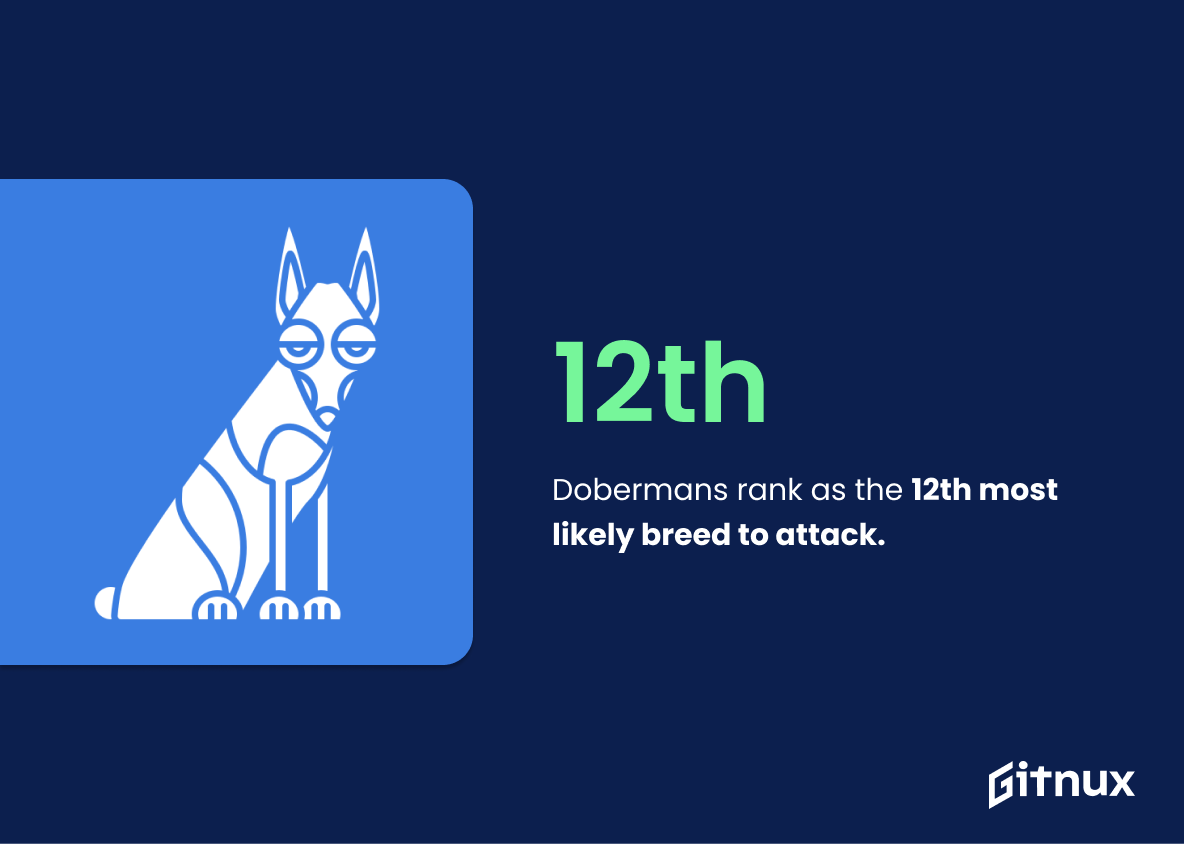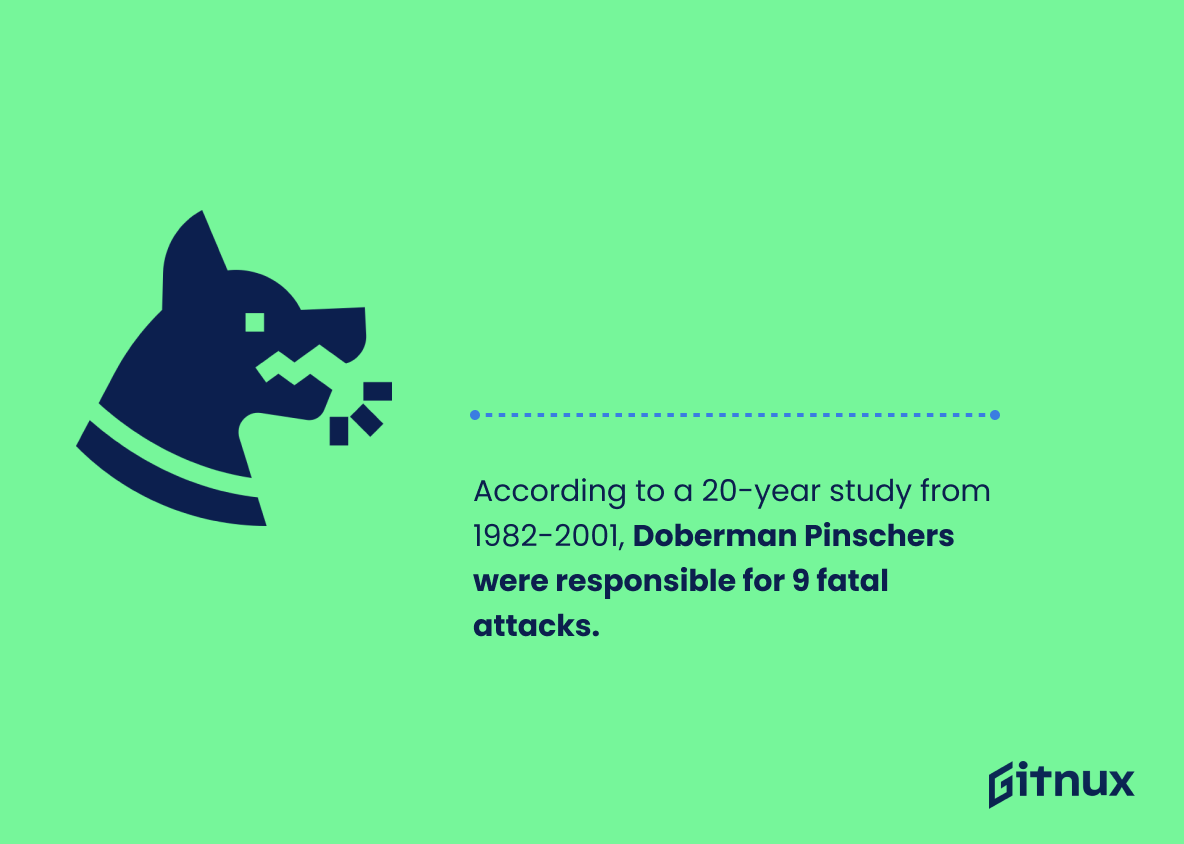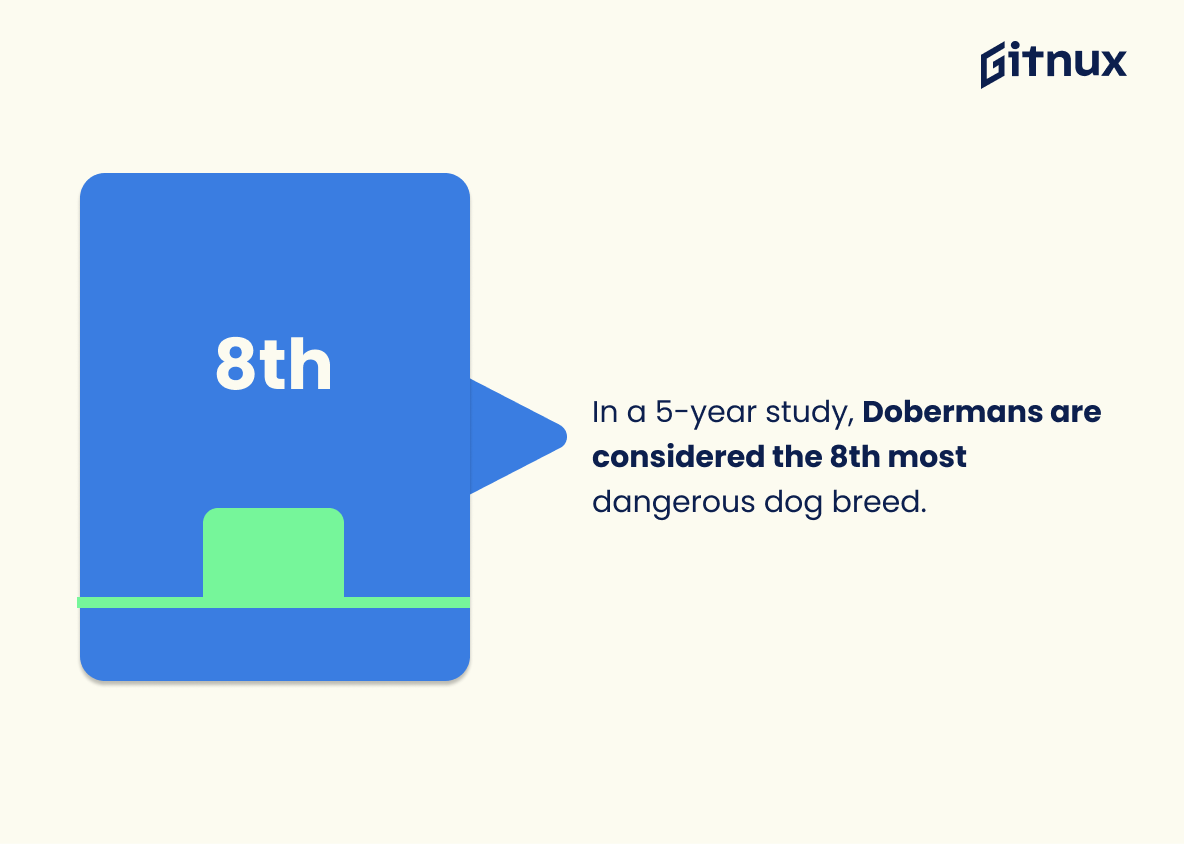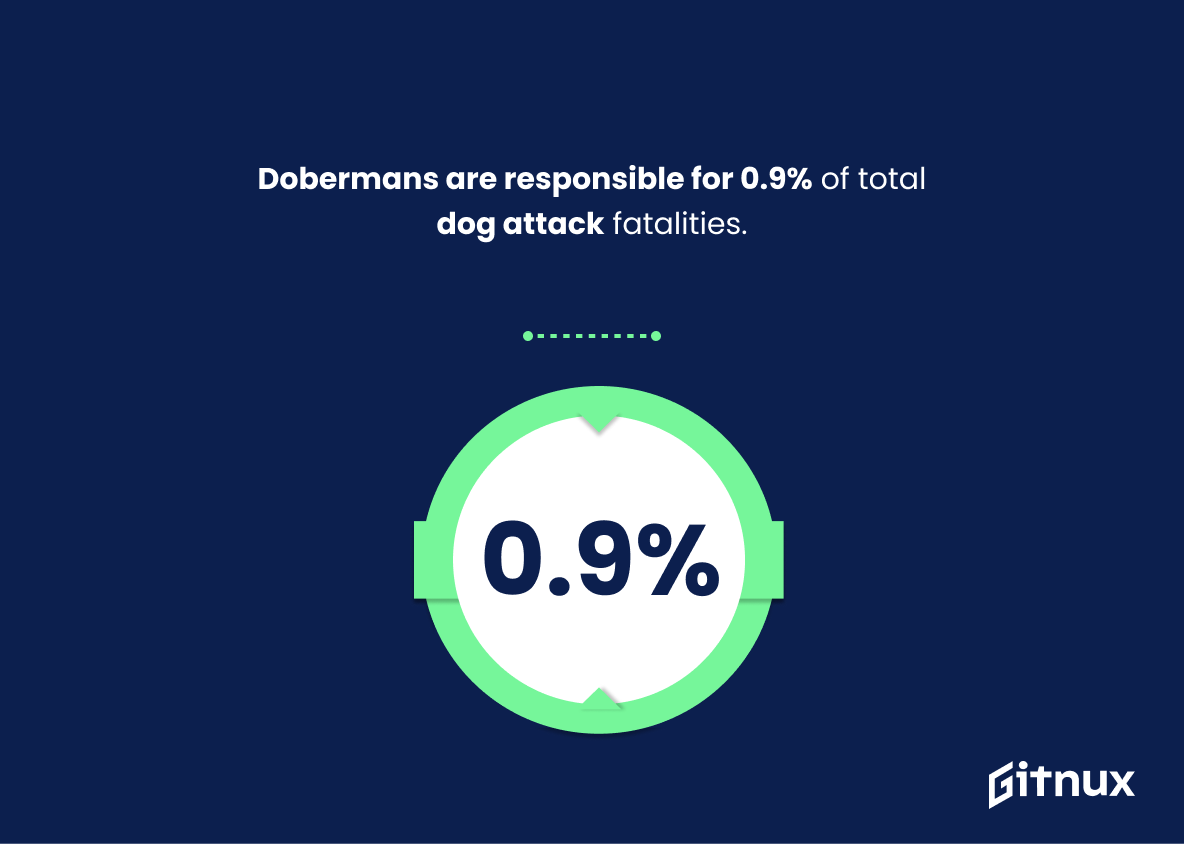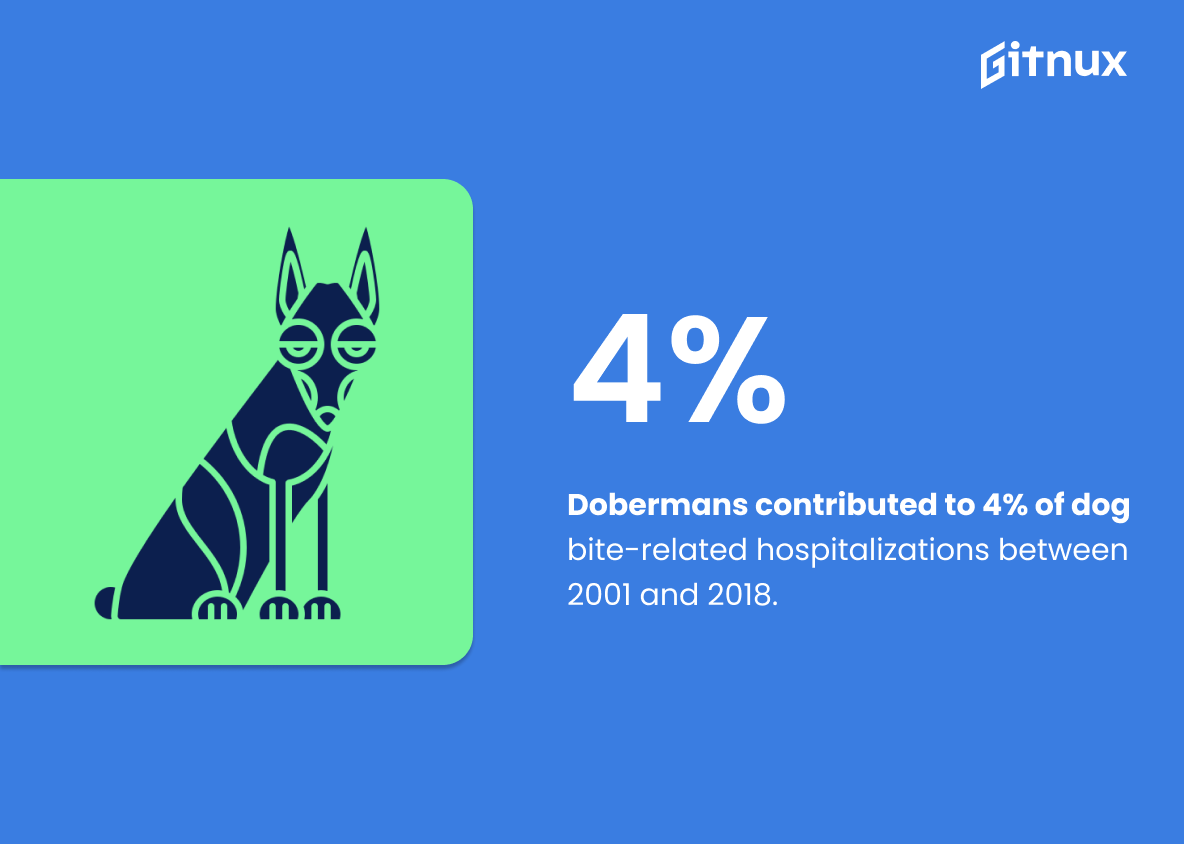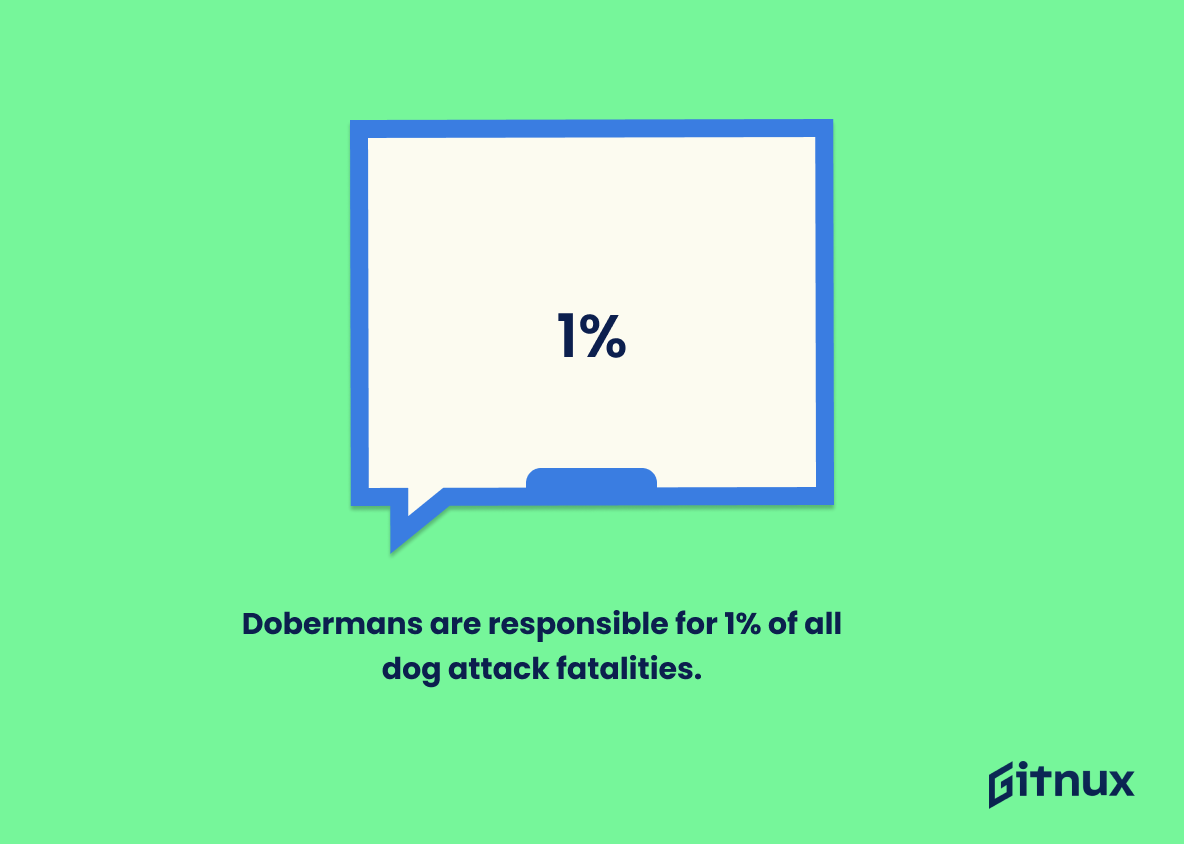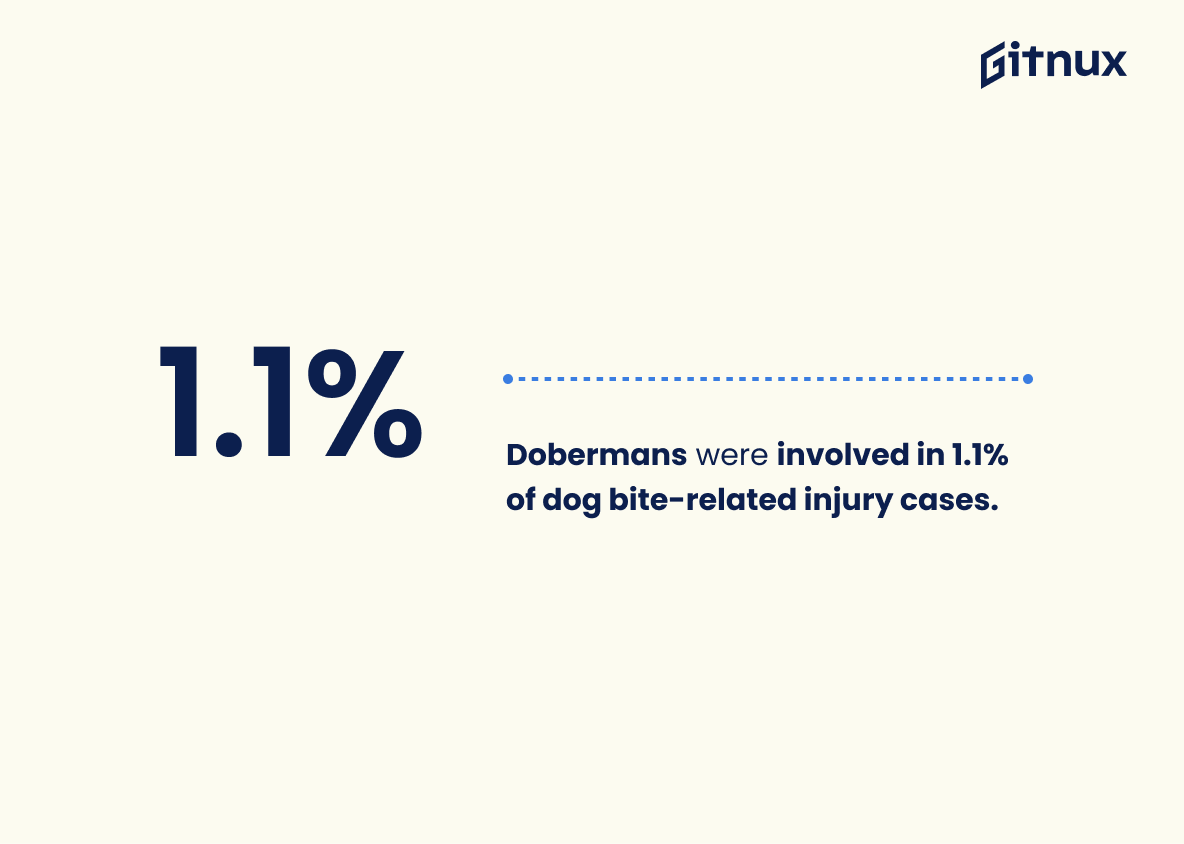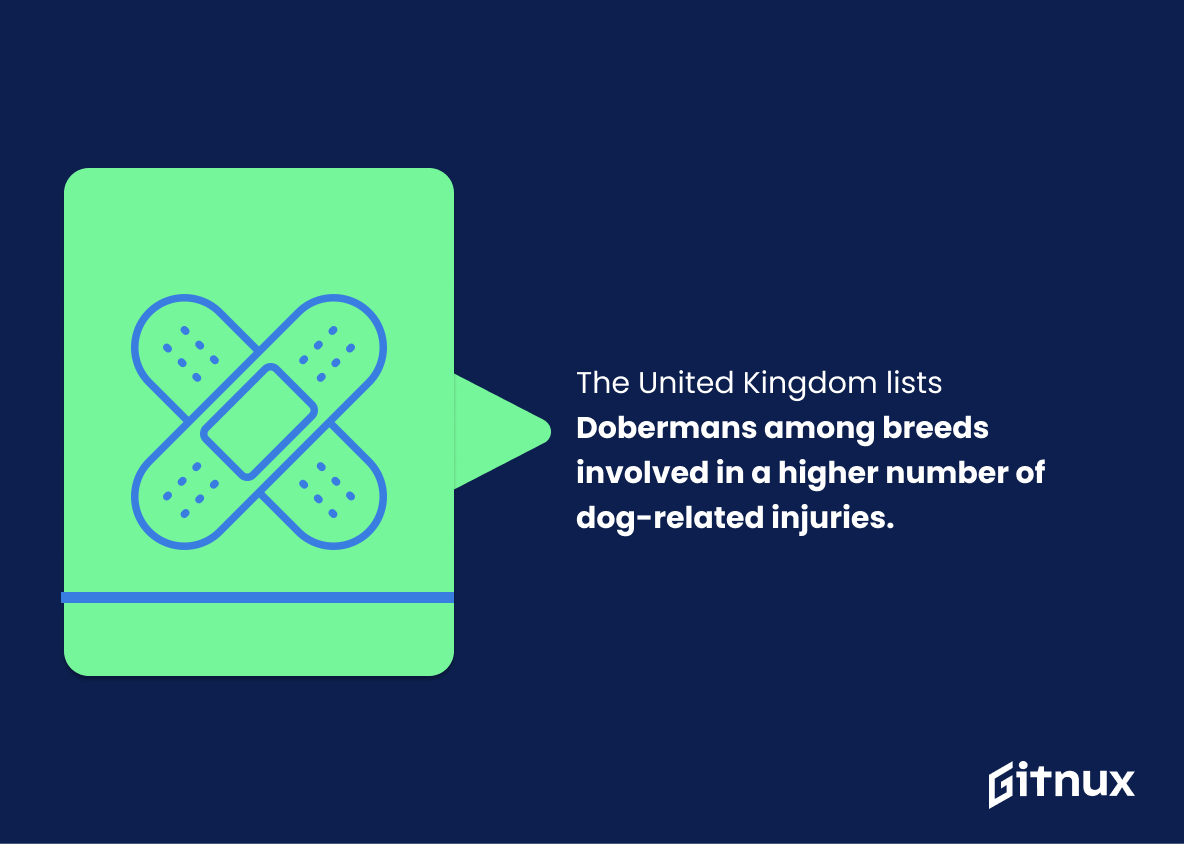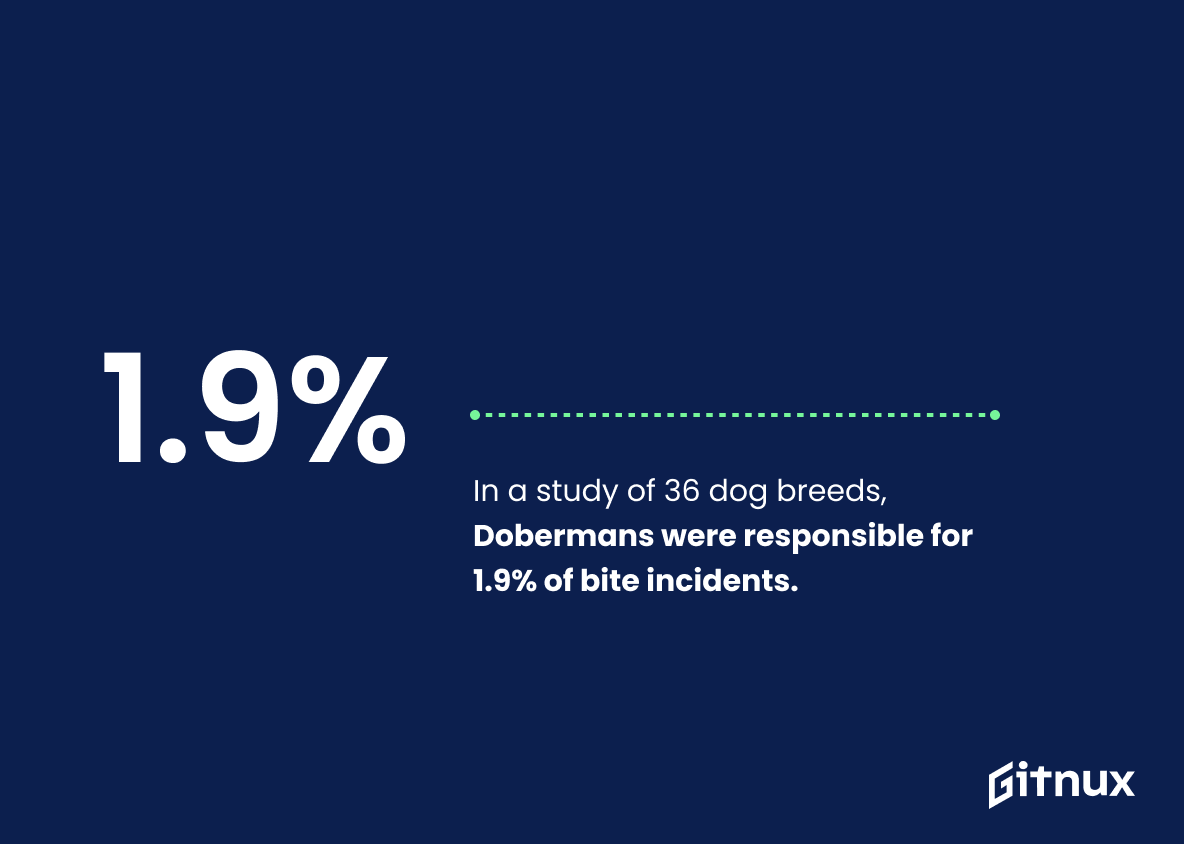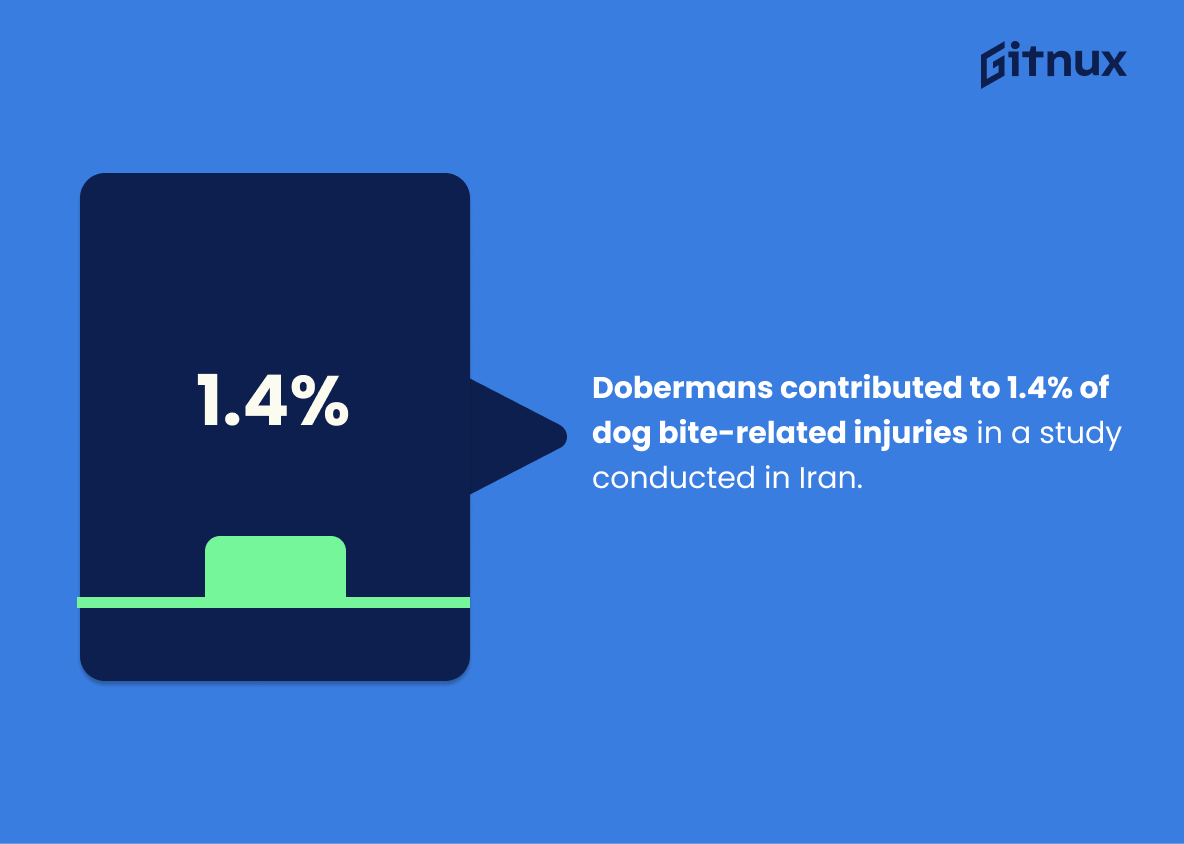Dobermans have a rich and extensive history, but they are often misunderstood. While Doberman Pinschers can be loyal and affectionate companions, it cannot be ignored that this breed has been involved in numerous bite incidents over the years. In fact, statistics reveal some striking facts about Doberman attack incidents: approximately 63% of Dobermans have been involved in bite incidents; they account for 1.5% of attacks on children and rank as the 12th most likely breed to engage in attacks.
According to a study conducted from 1982-2001, they contribute to 4.6% of serious dog-bite injuries, with 9 fatal attacks reported during that period.
Another 5-year study identifies them as the 8th most dangerous dog breed. Dobermans possess a bite force strength of 245 PSI. When considering a 20-year dataset from 2001 to 2018, they account for 0.9% of total dog attack fatalities, 4% of hospitalizations due to bites, 1% of all dog attack fatalities, 1.1% of injury cases, 2.5% of hospital admissions in New Zealand, and 2% of reported bites in the United States. In Canada, less than 1% of bites are recorded.
Additionally, researchers from Iran ranked Dobermans as the 6th most aggressive breed out of 36 breeds studied in terms of their behavior towards humans. This blog post aims to delve deeper into these Doberman attack statistics, providing you with a comprehensive understanding of why it is crucial for owners of this powerful canine companion to take extra precautions when interacting with them or others around them.
Doberman Attack Statistics Overview
Dobermans rank as the 12th most likely breed to attack.
This statistic is a crucial piece of information when it comes to understanding the prevalence of Doberman attacks. It provides a clear indication of how likely it is for a Doberman to attack, and can help inform readers of the blog post about the potential risks associated with owning a Doberman.
Dobermans account for 4.6% of serious dog-bite injuries.
This statistic is a telling indication of the potential danger posed by Dobermans. It highlights the fact that, while they may be loyal and loving companions, they can also be a source of serious injury if not properly trained and handled. This is an important point to consider when discussing Doberman attack statistics, as it provides a clear indication of the potential risks associated with owning a Doberman.
According to a 20-year study from 1982-2001, Doberman Pinschers were responsible for 9 fatal attacks.
This statistic is a crucial piece of evidence in understanding the potential danger of Doberman Pinschers. It provides a clear indication of the number of fatal attacks that have occurred over a 20-year period, giving readers a better understanding of the breed’s potential for aggression.
In a 5-year study, Dobermans are considered the 8th most dangerous dog breed.
This statistic is a stark reminder of the potential danger that Dobermans can pose. It serves as a warning to those who may be considering owning a Doberman, and provides a valuable insight into the breed’s attack history. It is an important piece of information to consider when discussing Doberman attack statistics.
Dobermans are responsible for 0.9% of total dog attack fatalities.
This statistic is a crucial piece of evidence in understanding the danger posed by Dobermans. It reveals that, while Dobermans may not be the most common breed involved in dog attack fatalities, they still pose a significant risk. This statistic is a reminder that, while Dobermans may be loyal and loving companions, they can still be dangerous if not properly trained and socialized.
Dobermans contributed to 4% of dog bite-related hospitalizations between 2001 and 2018.
This statistic is a telling indication of the potential danger posed by Dobermans, as it shows that they are responsible for a significant portion of dog bite-related hospitalizations. It is an important piece of information to consider when discussing Doberman attack statistics, as it provides insight into the frequency of such incidents.
Dobermans are responsible for 1% of all dog attack fatalities.
This statistic is a stark reminder of the potential danger that Dobermans can pose. It highlights the importance of responsible ownership and training when it comes to this breed of dog, as even a small percentage of fatalities is too many.
Dobermans were involved in 1.1% of dog bite-related injury cases.
This statistic is a crucial piece of information when discussing Doberman attack statistics, as it provides insight into the frequency of Doberman-related injury cases. It is important to note that, while Dobermans may not be the most common breed involved in dog bite-related injury cases, they still pose a risk and should be taken seriously.
The United Kingdom lists Dobermans among breeds involved in a higher number of dog-related injuries.
This statistic is a telling indication of the potential danger posed by Dobermans, as it highlights the breed’s involvement in a higher number of dog-related injuries. It is an important piece of information to consider when discussing Doberman attack statistics, as it provides insight into the potential risks associated with owning a Doberman.
Dobermans were responsible for 2.5% of bite-related hospital admissions in a New Zealand study.
This statistic is a telling indication of the potential danger posed by Dobermans. It shows that, in a New Zealand study, Dobermans were responsible for a significant portion of bite-related hospital admissions. This highlights the need for owners to be aware of the risks associated with owning a Doberman and to take the necessary precautions to ensure the safety of themselves and others.
Dobermans account for 2% of reported dog bites in the United States.
This statistic is significant in the context of a blog post about Doberman attack statistics because it provides a clear indication of the relative risk posed by Dobermans compared to other breeds. It demonstrates that, while Dobermans may be perceived as a dangerous breed, they are actually responsible for a relatively small proportion of reported dog bites in the United States.
Dobermans are involved in less than 1% of dog attacks in Canada.
This statistic is a testament to the fact that Dobermans are not as dangerous as some may think. It shows that despite their intimidating appearance, Dobermans are actually quite safe and rarely involved in dog attacks. This is an important point to make in a blog post about Doberman attack statistics, as it helps to dispel any myths or misconceptions about the breed.
In a study of 36 dog breeds, Dobermans were responsible for 1.9% of bite incidents.
This statistic is a telling indication of the prevalence of Doberman bites in comparison to other breeds. It provides a valuable insight into the relative danger posed by Dobermans, and can be used to inform readers of the blog post about the potential risks associated with owning a Doberman.
Dobermans contributed to 1.4% of dog bite-related injuries in a study conducted in Iran.
This statistic is significant in the context of a blog post about Doberman Attack Statistics, as it provides a tangible example of the potential danger posed by Dobermans. It demonstrates that, while Dobermans may not be the most common breed of dog to cause injury, they still pose a risk and should be treated with caution.
Conclusion
Based on the statistics presented, it is clear that Dobermans are involved in a significant number of bite incidents. While they may not be as aggressive towards humans as some other breeds, their powerful jaws and strong bite force make them capable of inflicting serious injury if provoked or mishandled. It is important to remember that any breed can become dangerous when raised improperly or treated with aggression; therefore, proper training and socialization should always be prioritized for all dogs regardless of breed.
References
0. – https://www.verywellfamily.com
1. – https://www.k9ofmine.com
2. – https://www.mayoclinicproceedings.org
3. – https://www.dogbitelaw.com
4. – https://www.pubmed.ncbi.nlm.nih.gov
5. – https://www.petolog.com
6. – https://www.dogsbite.org
7. – https://www.k9rl.com
8. – https://www.petful.com
9. – https://www.ctvnews.ca
10. – https://www.ncbi.nlm.nih.gov
11. – https://www.dailymail.co.uk
12. – https://www.animals24-7.org
